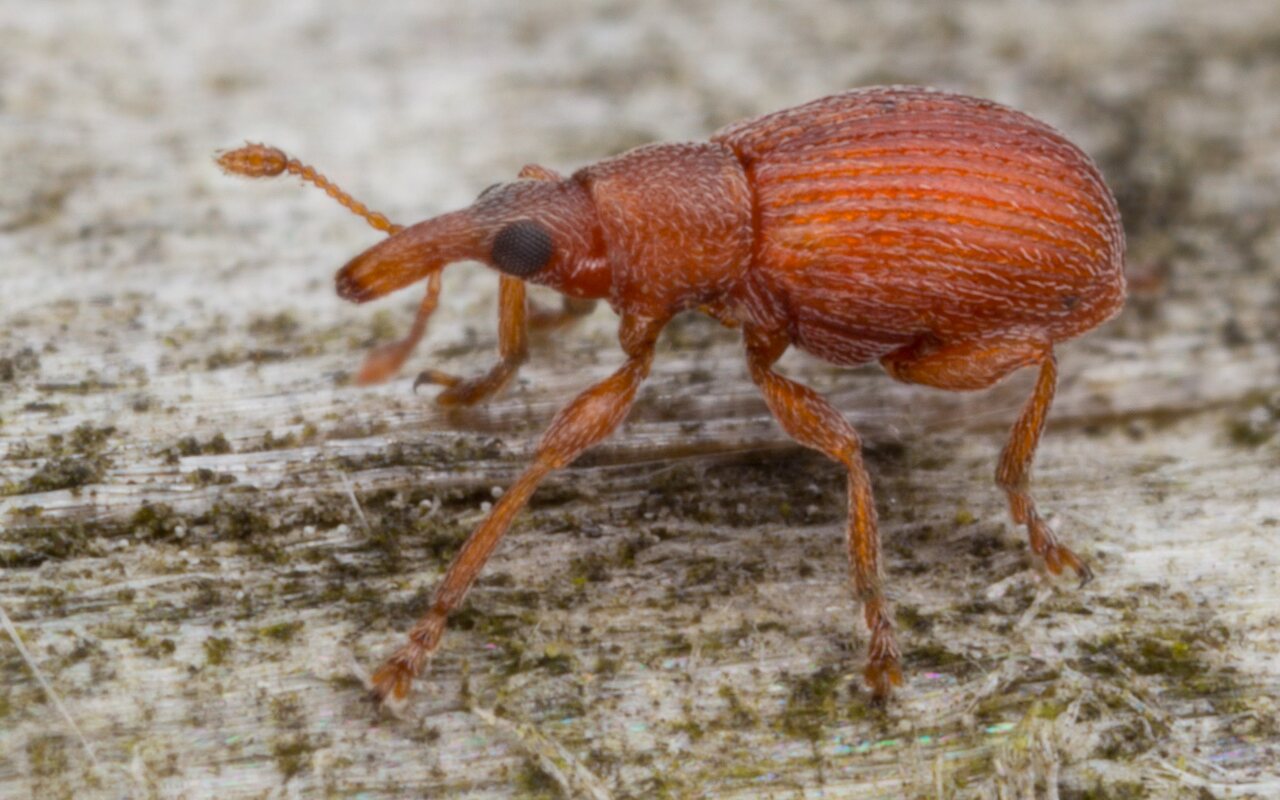
Apion haematodes · apionas
- Roter Ampfer-Spitzmausrüssler
- ruostepunanirppu
- blodspetsvivel
https://www.ukbeetles.co.uk/apion-haematodes
This western Palaearctic species is generally abundant throughout Europe and across North Africa, extending east into Asia Minor and central Russia, and north into Fennoscandia and the UK. Typical habitats are areas of dry grassland, moorland and wasteland, often on light sandy or chalky soils or in dry peaty areas, but they also occur on roadsides and agricultural borders etc. where the host plants are common. The species is very narrowly oligophagous on various Polygonaceae; the usual host is sheep’s sorrel (Rumex acetosella) but common sorrel (R. acetosa) and herb patience (R. patientia) have also been recorded hosting the species. Adults are present throughout the year; they overwinter in the soil or among litter near to host plants and become active during the first warm days of March or April and remain active through the summer. Mating occurs after a period of feeding during the spring and continues into early summer, females oviposit in stems or roots near the ground and larvae develop in the upper, thicker parts of roots; they tunnel through root tissue but do not form galls and contrary to some accounts, do not develop in petioles or leaf veins. Development is rapid; pupation occurs within the roots and new generation adults occur from late June. Sweeping suitable foliage during the summer is the easiest way to sample this species and in certain years, when huge local populations may occur, a single sweep may produce hundreds of adults.
2.2-3.1 mm, and recognized by the head sculpture; the temples are punctured immediately behind the eyes but otherwise transversely strigose and this continues extensively under the head which is slightly elongate. The rostrum shorter than the pronotum and distinctly curved in both sexes, in the male it is a little shorter than the length of the head and a little broader and duller when compared with the female; the female rostrum is at least as long as the head and a little narrower and more shiny. The pronotum is quadrate or nearly so and the elytra are rounded laterally and broadest behind the middle. The forebody is strongly and densely punctured, the elytral striae are broad and strongly punctured and the entire dorsal surface is clothed with conspicuous fine pale pubescence. Mature specimens are entirely red to brownish red but through the summer very pale or even yellow teneral specimens are common in large populations of mature specimens. Females are a little broader and more rounded in outline and this will soon become obvious in the field.
‥
0 comments
Add a comment